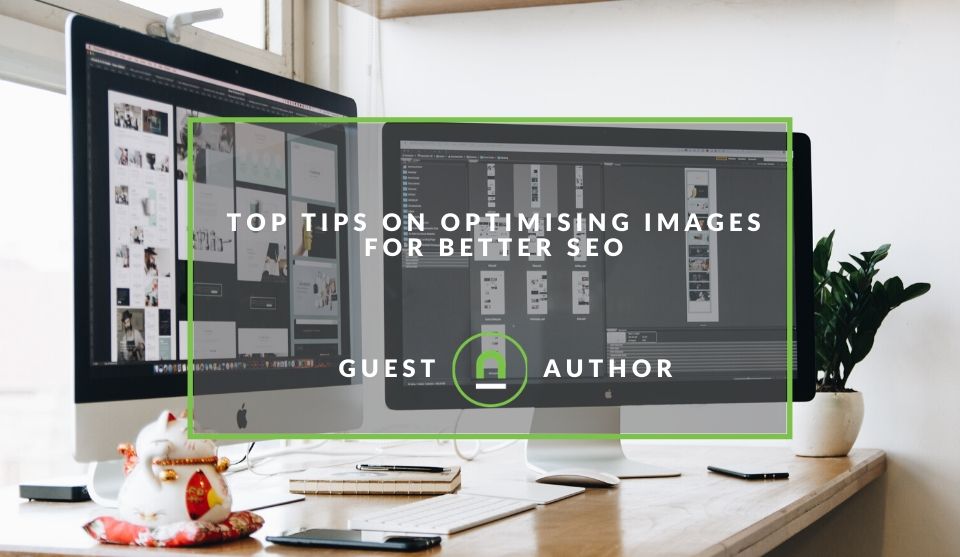Recent posts

Press Releases
The Rise of AI Computing Power Assets
16 January 2026

Industry Experts
Common ASO Mistakes African App Developers Make
09 January 2026

Ace of Trades
The South African Industrial Tech Revolution
05 January 2026

nichemarket Advice
Why Video Production Companies Still Outshine AI
24 December 2025
Popular posts
Extravaganza
Trending Music Hashtags To Get Your Posts Noticed
24 August 2018
Geek Chic
How To Fix iPhone/iPad Only Charging In Certain Positions
05 July 2020
Extravaganza
Trending Wedding Hashtags To Get Your Posts Noticed
18 September 2018
Money Talks
How To Find Coupons & Vouchers Online In South Africa
28 March 2019
Top Tips on Optimising Images For Better SEO
31 January 2020 | 0 comments | Posted by Andrew Thompson in Industry Experts
It is prevalent for website developers to resort stock photos when they need to make their web pages more attractive. Still, such acts can often be disastrous from the point of search engine optimisation. Images play an essential part in content delivery and according to reports; over 20% of all searches in America are on Google Images. Even though optimising images may not be high on the list of priorities of SEO professionals.
It can be well worth the time is taken and a valuable SEO asset that can often yield results very quickly and can be put to good use. Some crucial tips on optimising images:
Choose the correct image file format
There are so many file formats of images that it can be quite easy to get confused; however, it is vital to make sure that you are using the right format for the best impact on SEO. The two most common image formats for use on websites are JPEG and PNG. However, both have some pros and cons.
PNG images are generally of better quality. However, the file size can be larger while by using JPEG images, you may have to compromise somewhat on the quality but gain on the file size. It may be better to use PNG for all typical uses of images while reserving JPEG when you need to use bigger images.
Compress the images
Bloated web pages can be the bane of good SEO because they have a longer loading time. This increases the bounce rate, which sends negative signals to search engines. Since images can make up as much as 21% of the total weight of the webpage, it is important to compress the photos as much as possible without losing too much quality. There are a large number of online tools that can be used to compress images if you do not want to use conventional image editing software like Photoshop.
If you are using a WordPress site, you can use one of the many plugins available to do the job efficiently. It can take a little experimentation to know which tool works the best for you; using Google’s Page Speed Insights tool can be very useful in improving the speed of loading of web pages, according to https://www.inc.com.
Use unique and original images
Since the primary purpose of using images on the web pages is to make them attractive to users, you will need to use images that appeal and entice users. According to the top Manhattan Marketing Firm, if you use stock images that users have seen many times earlier, it will send out a signal to users that the contents of the page are also not likely to be original and useful.
This means that even if you have optimised the stock images, the very sight of the familiar pictures may well turn off visitors who are seeking fresh and original content. When you use images that are original and are of outstanding quality, they spark off user interest which makes them stay on the page longer and assists in conversions.
Ensure no copyright conflict
Irrespective of the image file format and the size of the images that you want to use on your website, it is vital that you use only the photos that you have the permission to use. Using either stock photos or photos belonging to others without permission can land you into severe problems as many organisations have found out to their dismay after having been sued for millions for copyright infringement.
Not only can the owners of the photos report you for copyright infringement that can result in an expensive lawsuit but also issue a notice for DMCA Takedown that must be immediately complied with or face legal ramifications. If you are using images from any third-party website, you need to check if they are free to use or comply with their licensing conditions.
Make the Image File Names Search Engine Friendly You can give your SEO a big boost by ensuring you rename the files with names that are descriptive and rich in keywords so that search engine bots can understand what the images are about and require you to provide additional context.
If you use a lot of images on your website, renaming them with accurate and contextual file names with relevant keywords can be a tiresome job, however, if you do it diligently, the rewards in terms of improved SEO can be awesome.
Write meaningful and search engine-friendly alt text
Even after you have provided relevant file names to images, you should round up the exercise by providing alt tags that search engines can decipher. Alt Text is generally not visible to users unless the image fails to load on the webpage for any reason in which case, it can be seen. However, these tags are always visible to search engine bots, and when you write them in simple English, it helps the search engines to figure out what the images mean and how they are relevant to the rest of the contents on the page.
Even though the purpose of the alt tags is to provide information about the images when the images themselves may not be visible, they prove to be very handy for search engines when appropriately optimised for SEO.
Ensure the images are mobile-friendly
With mobile and other portable devices accounting for an increasing volume of traffic, it is essential for SEO that the content of the web pages is mobile-friendly. This includes both the text and the images. If the images do not display correctly on mobile phones, the appeal of the contents will get reduced, and this can reflect in less time being spent on the website and higher bounce rates.
By ensuring that you adopt a responsive web design, you can ensure that the images, as well as the text, display correctly on the smaller screens thus helping the users to fulfil their search intent better.
Conclusion
It is imperative to appreciate the vital role of images to make web pages more appealing and promoting conversions. This makes it necessary for website developers and content managers to ensure that the images are optimised to the best possible extent by choosing the right file format, providing the least apparent size without compromising quality, selecting images that are fresh and original as well as attending to other on-page SEO elements to boost page rankings.
Tell us your SEO story
Would you like to write for nichemarket just like Andrew has? Find out how to submit a guest post and when you're ready, you can contact us.
Let's review your image SEO
If you're worried that your images are affecting your SEO, then contact us for an audit today.
Promote your business
Are you a business owner? Then why not register on nichemarket and put your business in front of thousands of nicheseekers every month. Registering with nichemarket is easy; all you will need to do is head over to our sign up form and follow the instructions. If you require a more detailed guide on how to create your profile or your listing, then we highly recommend you check out the following articles.
Recommended reading
If you have time to spare why not dive deeper down the rabbit hole and check out these posts for help on SEO:
- Google Images Will Index Image Meta Data
- Google Image Search Launches New Image Badge
- 4 FREE Tools to compress your images
- How To Get Google To Index Cloud Hosted Images and Files
- Google Shop Enabled Image Ads Have Arrived
Tags: SEO, UX, Guest Post
You might also like
Where You Can Find International Remote Jobs For South Africans
23 December 2025
Posted by Mia Stewart in Press Releases
Want to find international remote jobs for South Africans? Look no further, in this breakdown we look at your options so you can start applying for W...
Read moreBuilding Trust In Online Marketplaces Through Better Verification
17 December 2025
Posted by Jay Stone in Shopaholics
Learn how advanced verification methods build trust in online marketplaces, protect users from fraud, and ensure a secure, reliable digital trade env...
Read more{{comment.sUserName}}
{{comment.iDayLastEdit}} day ago
{{comment.iDayLastEdit}} days ago
 {{blogcategory.sCategoryName}}
{{blogcategory.sCategoryName}}


